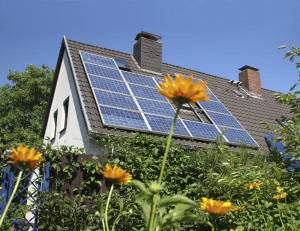Image source: ferringtonpost.com
Clyde Sharpe
President of International Sales for Elasto Proxy
Did you know that 2.5-million Australians now power their homes with solar electricity? According to the Clean Energy Council, Australia is leading the way in solar energy. Five years ago, 20,000 households owned solar power systems. Today, over one-million homes are powered by the sun. Once the domain of green power enthusiasts, solar energy now enjoys mass appeal among cost-conscious consumers Down Under.
Could California be close behind? According to Environment California, the Golden State now generates more energy from solar power than all but five of the world’s countries. With six times as many rooftop systems as the state had six years ago, California is steadily moving towards the Million Solar Rooftops mark at a pace that’s inspiring other U.S. states, such as Colorado.
Solar Power and Industry Partners
Closer to home and here in Canada, solar energy is used mainly for space heating, water heating, and drying crops and lumber. Although Quebec, Ontario, and the prairie provinces receive the most direct sunlight, other parts of the country can also benefit. In the territories, for example, pipeline monitoring stations could use stand-alone photovoltaic (PV) cells instead of diesel fuel to generate electricity.
Both at home and abroad, the solar energy industry needs supply chain partners who deliver products on-time and according to specifications. In Canada, industry partners make systems and components ranging from solar controls to specialized water pumps. PV panels remain the most expensive part of a solar power system, however, and buyers need panels that last to realize a return on investment (ROI).
PV Panels and Rubber Products
Although some solar panels are made of plate glass, tempered glass is significantly stronger. Made by thermal or chemical methods, this so-called safety glass lasts longer and providers greater resistance to breaking. This is especially important in solar power systems because cracked or broken glass may admit water that can damage electrical components such as charge controllers and inverters.
Protecting the plate or tempered glass in a PV panel is not enough, however. The rubber profiles used with solar panels are important, of course, but PV panel manufacturers must also protect sensitive solar lenses or concentrators. Used to concentrate the sun’s rays, these spherical glass parts are protected by rubber gaskets made of durable, reliable, weather-resistant materials.
Application Experience and Technical Expertise
“Clean energy” and “green energy” are buzzwords these days, but that doesn’t mean the alternative energy industry lacks supply chain choices. So whether you’re an experienced solar power provider or a new PV panel manufacturer, it’s important to pick a partner who will listen to your needs and analyze all of your business requirements.
Do you need design assistance or custom-fabricated rubber profiles for PV panels? What about rubber gaskets for solar concentrators? Do you need advice about compound selection instead? If you’re searching for high-quality, low-volume sealing solutions, please comment on this blog entry or connect with me on LinkedIn. Hope to hear from you soon.









